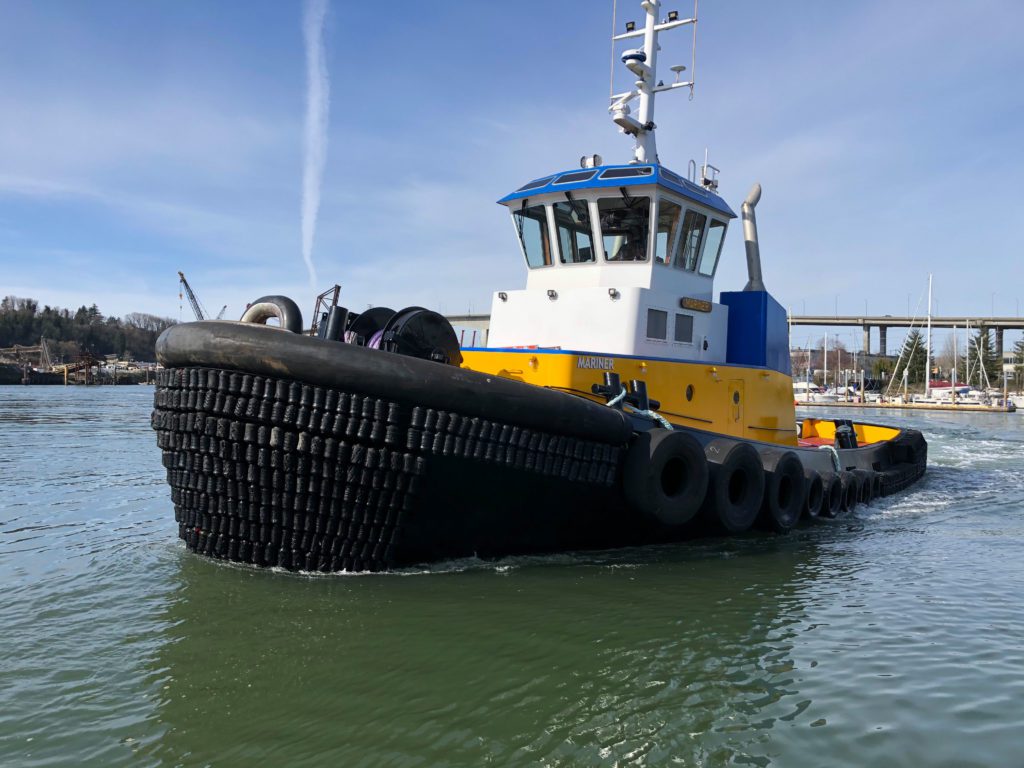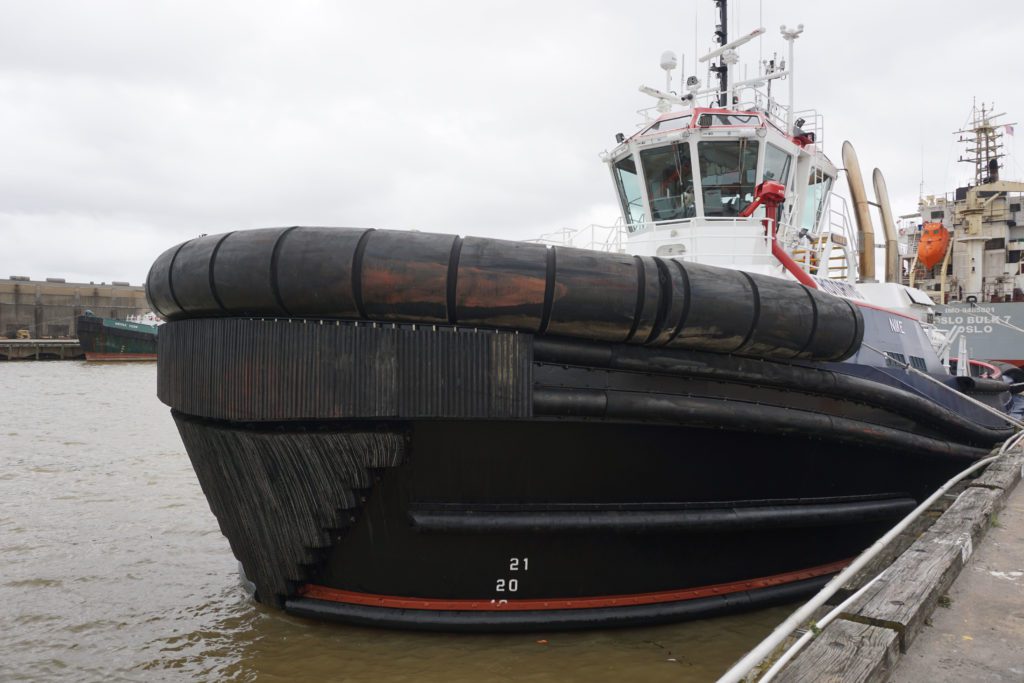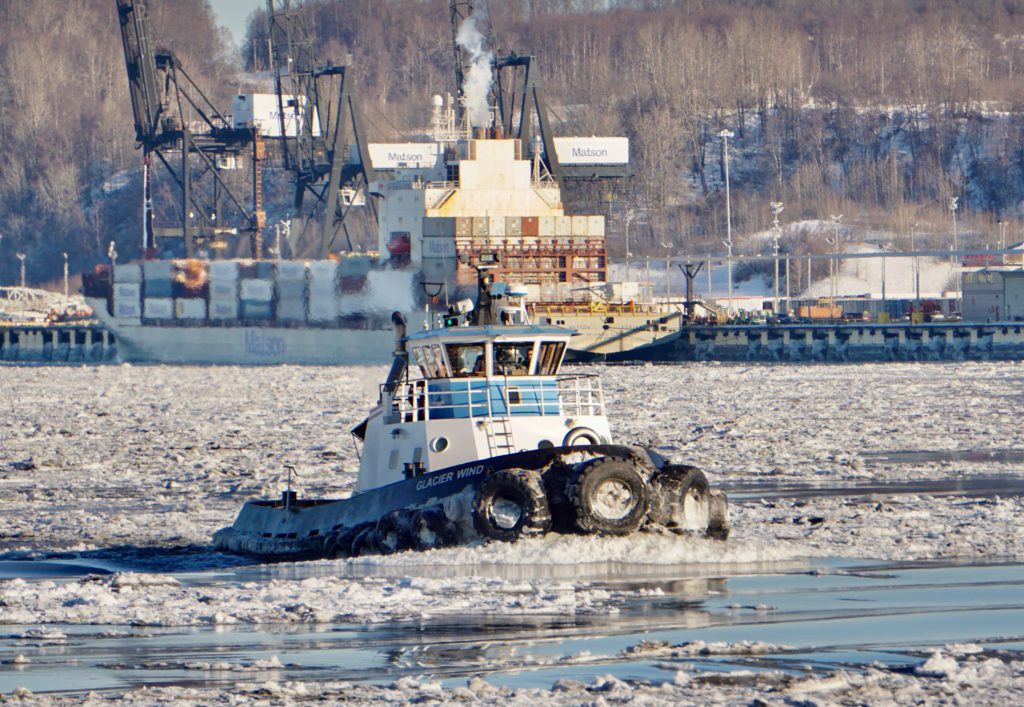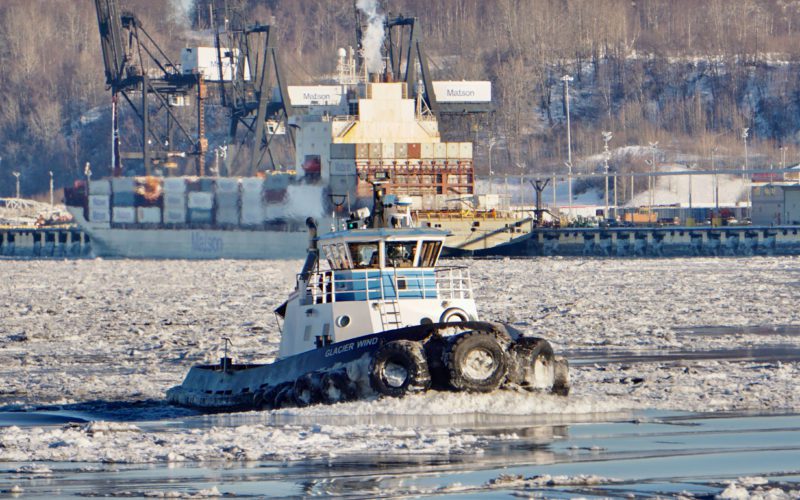
From their powerful engines to their sturdy towing winches, modern tugboats are muscular marvels of innovation. By comparison, their fendering packages can feel like an afterthought.
But it goes without saying that properly designed fenders are integral to the tug’s overall performance. They are also critical to the vessel’s longevity, and can have an outsized impact on long-term maintenance costs.
“If you don’t protect the boat properly, you are going to shorten its service life,” said Peter Soles, who works in marine operations and business development for Glosten, the Seattle naval architecture firm.
“Fendering is a consumable. It is going to be replaced at some point,” he continued. “But you don’t want to design a fendering system in a way that you are chewing it up and replacing it more frequently than necessary”
The role of the fendering system, in its most basic form, is to absorb the relative energy created by two vessels. That energy could be the result of a ship-assist tug pushing against a large oceangoing ship, a twin-screw tug towing a barge on the hip, or a 10,000-hp towboat pushing 40 barges up the Mississippi River. Different operations require different fendering packages for optimal performance and protection.
Decisions about fendering usually come from naval architects designing the tugboat, the shipyards building it or the operator who will run the vessel. And in some cases all three work together on the package.
Naval architects and fender manufacturers usually start any design by determining how the vessel will be used. Will the tug do one job or many? Could the nature of its work change over the years? The answers will likely influence what type of fendering system is most appropriate.
“A lot of customers like to build their boats multipurpose,” said Ben Beierle, regional sales manager for Schuyler Rubber, based in Woodinville, Wash. “The customers that have the most foresight are the ones that basically plan for any kind of work.”
“We enjoy working with any operator or naval architecture firm that wants to consult with us,” he added. “This allows us to collaborate on a fender system design that both accomplishes the work the tug is being built to perform as well as utilize our 70-plus years of experience in building them a solution for maximum performance and durability.”
Fender solutions that have worked in the past tend to get used on one project after another. Beierle has files on fender projects going back decades. The same is true for naval architects who design the fender solution with the rest of the tugboat.
“Those tend to become a tried-and-true solution,” said Lawren Best, director of design development for Robert Allan Ltd., based in Vancouver, B.C.
Every now and again a tug operator throws a curveball requiring designers to craft a novel fendering solution. One example might be a tugboat that will operate alongside a ship in larger sea states. In those cases, Best and his team apply the same knowledge of successful fender systems along with advanced software programs that can gauge how the fenders will perform under harsh conditions.
“The ship owners are obviously concerned with the ship, and that the tug is not going to leave a dent or impact the overall structure,” he said. “You also want to make sure those forces are distributed smoothly back to the structure of the tug.”
Just as there is no single tugboat for every job, there is no one fender for every vessel. The fendering package is one of the most customizable pieces of the tugboat, with myriad options to protect hull sections that could contact another vessel during its working life.

Fendering solutions have a lexicon all their own. Each segment of fendering is known as a course and many tugboats have multiple courses. For instance, a ship-assist tugboat might have a course of oversized cylindrical fendering along the top of its bow with another course or two below it of a different type.
Molded rubber is the name for a firmer pure rubber solution used on some harbor tugs. Laminated fendering, on the other hand, is the term for fenders made from pieces of recycled tires that have been compressed together. Modern tires, the result of decades of design and innovation, contain surprisingly little rubber.
And then there is D-rubber and W- or M- rubber, each of which is made from rubber molded to resemble its namesake letter when pressed against the hull.
Schuyler is probably best known for its laminated fenders. The company uses recycled semi-truck tires to create its solid and soft-loop bow fenders and its rectangular side fenders. Every fender system the company makes is custom built for a specific vessel on specialized machinery at its facilities in Woodinville and Broussard, La.
Schuyler’s laminated fenders are surprisingly “green” compared to manufactured rubber, which uses oil and generates emissions. A fairly conventional soft-loop bow fender, for instance, can keep up to 400 tires out of a landfill, Beierle said, while the stern package can use another 100 or more.
“Our fenders take oil that was already used up for another purpose as a discarded tire and then uses those resources and engineering to create a durable and sustainable fender system,” he said.
Each fender course is surprisingly heavy, often weighing many tons. But there is a fairly wide range between softer and firmer solutions, with each providing different performance characteristics. Schuyler’s laminated double-loop system is on the softer end, while W- or M-rubber is firmer.
Each can have its own trade-off. Softer packages usually provide better grip alongside a ship and a more forgiving contact surface for the operator, Soles said. But depending on the system, it might not last as long as a firmer molded fendering option that provides less cushioning and grip.

Different fenders also perform differently in different climates. The Shibata-style cylindrical fenders that work well in Miami or Seattle aren’t a good fit for frigid climates, where they can become slippery in ice. Cook Inlet Tug & Barge, based in Anchorage, Alaska, has found that oversized tractor tires provide cushion and grip in those challenging conditions.
The tugboat’s sides and stern require different levels of protection and calculus around cost, longevity and aesthetics. Some operators swear by tires alone, or tires in conjunction with laminate or D-rubber. Others won’t go near them, thinking they detract from the tug’s overall appearance.
Soles is something of a tire evangelist. The tires used on many modern tugboats started out on the landing gear of Boeing 737s and other commercial aircraft. They are highly durable and uniquely resistant to compression from the sides compared to typical truck and tractor tires. This makes them surprisingly adaptable for a variety of workboat applications.
“You want a lot of contact area and rubber that conforms around shapes. I love tires for that reason,” said Soles, a licensed tugboat captain who came up with Western Towboat Co. in Seattle. “They will compress and they will deform temporarily and there are many of them. You can make up to something with some curvature and the boat will sort of mash into it and bend around it and present a broader surface.”
The worst situation, he added, is when the vessel doesn’t have adequate fendering in critical areas.
Other considerations include ease of installation. Schuyler Cos., for instance, said its shipyard-friendly laminated fendering arrives formed to the shape of the hull and ready to be welded into position. Ease of replacement is another factor. A whole section D-rubber running down the side of a tugboat, for instance, must be completely replaced if a small area fails.
“It all comes back to what you are using boat for,” Soles said. “Tugboats do so many different things and the fendering systems kind of mirror that. You can make a tailored solution for almost anything you expect the boat to do once in service. •

